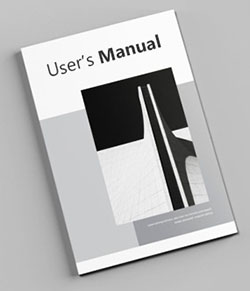Membaca Mitos dan Ideologi Homoseksual dalam Drama 2gether The Series: Perspektif Semiotika
Abstract
Abstrak: Paper ini menganalisis makna mitos dan ideologi dalam Serial Drama Thailand berjudul 2gether: The Series. Serial drama asal Thailand ini dianggap membangun mitos dan ideologi homoseksual. Wacana tentang mitos dan ideologi homoseksual dalam Drama 2gether: The Series diselesaikan dengan menggunakan pendekatan penelitian kualitatif dengan analisis tekstual. Metode analisis data menggunakan semiotika Roland Barthes yang terdiri dari tanda, penanda, petanda, denotasi dan konotasi, serta mitos dan ideologi. Tulisan ini menyimpulkan bahwa tanda-tanda homoseksualitas adalah rambut pendek, kaos oblong, ruangan terang, dan gelang. Petandanya adalah Tine dan Sarawat, yang secara ideologis drama ini secara khusus mengusung tema homoseksualitas. Penanda dalam drama ini adalah bahwa homoseksual adalah gender ketiga yang dapat menjalin hubungan sesama jenis tanpa dianggap queer. Makna denotasinya adalah homoseksual adalah kelompok yang dapat melakukan tindakan normal seperti kelompok heteroseksual. Makna konotatifnya adalah bahwa homoseksual yang dianggap queer dapat dikonstruksikan menjadi benar seperti perilaku heteroseksual. Dari segi mitos dan ideologi, serial drama ini mengkonstruksi norma budaya yang dianggap normal oleh kelompok heteroseksual dan Islam secara tekstual
Abstract: This paper analyses the meaning of myth and ideology in the Thai Drama Series entitled 2gether: The Series. This drama series from Thailand is considered to construct homosexual myths and ideology. The discourse on homosexual myths and ideology in Drama 2gether: The Series is resolved using a qualitative research approach to textual analysis. The data analysis method uses Roland Barthes' semiotics which consists of signs, signifier, signified, denotations and connotations, as well as myths and ideologies. This paper concludes that signs of homosexuality are short hair, t-shirts, bright rooms, and wristbands. The signified are Tine and Sarawat, who ideologically this drama specifically carries the theme of homosexuality. The signifier in this drama is that homosexuals are the third gender who can have same-sex relationships without being considered queer. The meaning of the denotation is that homosexuals are a group that can carry out normal actions like heterosexual groups. The connotative meaning is that homosexuals who are considered queer can be constructed to be as true as heterosexual behaviour. In terms of myth and ideology, this drama series constructs cultural norms that are considered normal by heterosexual and Islamic groups textually
Keywords
Full Text:
PDF (Bahasa Indonesia)References
Adriaens, P. R., & De Block, A. (2006). The Evolution of a Social Construction: The Case of Male Homosexuality. Perspectives in Biology and Medicine, Vol. 49(4). https://doi.org/10.1353/pbm.2006.0051
Al-Qurthubi, S. I. (2008). Tafsir Al-Qurthubi: Surah Al-Hijr, An-Nahl, Al-Israa’, dan Al-Kahfi (Asmuni & M. B. Mukti (eds.)). Pustaka Azzam.
Alfath, F. N. (2020). Homonormativity in Thailand’s Web Series: 2gether the Series. Introduction to Cultural Studies Paper: English Literature, Faculty of Languages and Arts, State University of Jakarta.
Alozie, N. O., Thomas, K., & Akpan-Obong, P. (2017). Global Liberalization on Homosexuality: Explaining the African gap. Social Science Journal, Vol. 54(2). https://doi.org/10.1016/j.soscij.2016.09.001
Ash-Shabuni, S. M. A. (2001). Shawatut Tafsir: Tafsir-Tafsir Pilihan Jilid 3 Ar-Ra’d - An-Naml. Pustaka Al-Kautsar.
Ayub. (2017). Penyimpangan Orientasi Seksual (Kajian Psikologis dan Teologis). Tasfiyah: Jurnal Pemikiran Islam, 1(2), 179–226. https://doi.org/10.21111/tasfiyah.v1i2.1851
Bahri, N. F. (2019). Analisis Semiotika Roland Barthes pada Masjid Keraton Buton di Kota Baubau, Sulawesi Tenggara. Jurnal Rupa, 4(2). https://doi.org/10.25124/rupa.v4i2.2314
Barthes, R. (1957). Mythologies. Paladin.
Berger, A. A. (2014). Semiotics and Society. Society, Vol. 51(1), 22–26. https://doi.org/10.1007/s12115-013-9731-4
Berger, P. L., & Luckmann, T. (1967). The Social Construction of Reality. Penguin Books. https://doi.org/10.1163/157006812X634872
Blanco-Ruiz, M., & Sainz-De-Baranda, C. (2018). Channels Produced by LGBT+ YouTubers: Gender Discourse Analysis. Observatorio, 12(1), 097–121. https://doi.org/10.15847/OBSOBS0001386
Branston, G., & Stafford, R. (2003). The Media Student’s Book (3rd ed.). Routledge Taylor & Francis Group.
Branston, G., & Stafford, R. (2010). The Media Student’s Book, Fifth Edition.
Brennen, B. S. (2017). Qualitative Research Methods for Media Studies (2nd ed.). Routledge Taylor & Francis Group.
Busch, P. (2020). Lesbian, Gay, Bisexual, Transgender, Queer, + Representation in Film to Promote Inclusion in Education. Tesis S2, Master of Arts in Education, San Francisco State University, San Francisco, California.
Carrara, S. (2016). Anthropology and the process of the construction of homosexual citizenship in Brazil. In Cadernos Pagu (Vol. 47, Issue 2016:e164717). https://doi.org/10.1590/18094449201600470017
Chan, Y. K. (2021). A Heteropatriarchy in Moderation: Reading Family in a Thai Boys Love Lakhon. East Asian Journal of Popular Culture, 7(1), 81–94. https://doi.org/10.1386/eapc_00040_1
Choomgrant, K. (2009). Expression of Sexuality and Life Style in Singapore and Bangkok: A Case of Singaporean Homosexual Men. Tesis S2, Master Programme in Asian Studies, Centre for East and South-East Asian Studies, Lunds Universitet.
Coleman, K. (2015). Alienation through Social Construction: A Call for the Re-humanization of Sexuality. Journal of Positive Sexuality, 1, 25–30. https://doi.org/doi.org/10.51681/1.121
Danesi, M. (2000). Encyclopedic Dictionary of Semiotics, Media, and Communications. University of Toronto Press.
Danesi, M. (2017). The Semiotics of Emoji: The Rise of Visual Language in The Age of The Internet. Bloomsbury Publishing.
Dialek, C. L. (2013). Gender Performativity in Ekachi Uekrongtham’s Beautiful Boxer. Allusion Journal, 2(1).
Dianti, Q. (2022). Genap 23 Tahun, Inilah 5 Rekomendasi Drama Thailand Win Metawin yang Patut Kamu Tonton!
Febriani, E. (2020). Fenomena Kemunculan Kelompok Homoseksual Dalam Ruang Publik Virtual. Komunikologi: Jurnal Ilmiah Ilmu Komunikasi, Vol. 17(01, Maret), 30–38.
Freud, S. (1994). The Social Construction of Gender. Journal of Adult Development, 1(1), 347–352. https://doi.org/10.4324/9780429499821-61
Gerryaldo. (2020). Sinopsis & Review Drama BL Thailand 2gether The Series.
Gibson, L. E., & Hensley, C. (2013). The Social Construction of Sexuality in Prison. The Prison Journal, Vol. 93(3). https://doi.org/10.1177/0032885513490503
Glas, S., & Spierings, N. (2021). Rejecting Homosexuality but Tolerating Homosexuals: The complex relations between Religiosity and Opposition to Homosexuality in 9 Arab countries. Social Science Research, Vol. 95(March).
Habibah, Y. N., Pratama, J. A., & Iqbal, M. M. (2021). Globalisasi dan Penerimaan LGBTQ+ di ASEAN: Studi Kasus Budaya Boys’ Love di Thailand. Jurnal Sentris, 2(1), 87–103.
Hakim, L., & Monalisa, O. (2022). Roland Barthes Semiotics Analysis on Ramadan Version of Pocari Sweat Advertisement 1442 H. Jurnal Mediakita: Jurnal Komunikasi Dan Penyiaran Islam, 6(2), 133–146.
Hamka. (2003). Tafsir Al-Azhar (5th ed.). Pustaka Nasional PTE LTD Singapura.
Handayani, C. D. B. (2020). Fakta Still 2gether, Bright Vachirawit-Win Metawin Sukses Bikin Baper.
Hart-Brinson, P. (2016). The Social Imagination of Homosexuality and the Rise of Same-sex Marriage in the United States. Socius: Sociological Research for a Dynamic World, 2, 1–17. https://doi.org/10.1177/2378023116630555
Hazm, I. F. I. (1993). Risalah Cinta : Kitab Klasik Legendaris Tentang Seni Mencintai. Mizan Pustaka.
Herlambang, A. A. (2022). 31 Negara Melegalkan LGBT, Izinkan Pernikahan Sesama Jenis.
Hibatulloh, F. I., Indryani, G. W., Qodir, M. R. Al, & Mulyadi, A. W. E. (2020). Discrimination and Legal Protection of Transgender: What Can We Learn? Advances in Social Science, Education and Humanities Research, 510, 559–566. https://doi.org/10.2991/assehr.k.201219.085
Hudiyani, Z. (2017). Homoseksual dan Islam (Analisis Maqaṣid Shari’ah terhadap Wacana dan Argumen Sarjana Islam Liberal) (A. Fauzi (ed.)). Yayasan Pengkajian Hadist El-Bukhori.
Ichwan, M. N. (2021). Forbidden Visbility: Queer Activsim, Shari’a Shpere and Politics of Sexuality in Aceh. Studi Islamika: Indonesian Journal for Islamic Studeis, 28(2).
Ida, R. (2014). Studi Media dan Kajian Budaya. Prenada Media Group.
Irawan, E. (2017). Hukuman Bagi Pelaku Homoseksual dan Lesbian dalam Perspektif Hukum Islam dan Hukum Positif. Skripsi S1, Konsentrasi Hukum Pidana Islam, Program Studi Hukum Pidana Islam, Fakultas Syariah dan Hukum, Universitas Islam Negeri Syarif Hidayatullah Jakarta.
Jiarananon, S., & Serisuthikulchai, P. (2021). A Success of Content Communication Through Y-Series: A Case Study of 2gether the Series. The Asian Conference on Media, Communication and Film 2021, 37–46.
Kaur, P. (2017). Queer Hindi Cinema : A Study on Understanding LGBT Identities. International Journal for Innovative Research in Multidisciplinary Field, 3(3), 1–6.
Kuhar, R. (2003). Media Representations of Homosexuality an Analysis of The Print Media in Slovenia, 1970-2000 (B. Petkovic (ed.)). Peace Institut. https://doi.org/10.1007/978-1-137-30591-6_5
Listiorini, D., & Vidiadari, I. S. (2022). News of LGBT on Online Media in 2020: Endless Stigma. Jurnal Studi Komunikasi (Indonesian Journal of Communications Studies), 6(2), 531–546. https://doi.org/10.25139/jsk.v6i2.4886
Lorber, J. (2018). Gender dan Sexuality as Social Construct. In D. B. Grusky & J. Hill (Eds.), Inequality in the 21st Century: A Reader. Taylor & Francis Group. https://doi.org/10.4324/9780429499821
Lustyantie, N. (2012). Pendekatan Semiotika Model Roland Barthes dalam Karya Sastra Prancis. Seminar Nasional FIB UI, 1–15.
Manik, T. S., Riyanti, D., Murdiono, M., & Prasetyo, D. (2021). Eksistensi LGBT Di Indonesia dalam Kajian Perspektif HAM, Agama, dan Pancasila. Jurnal Kewarganegaraan, 18(2). https://doi.org/10.24114/jk.v18i2.23639
Marecek, J., Crawford, M., & Popp, D. (2004). On The Construction Of Gender, Sex, And Sexualities. The Psychology Of Gender, 192–216.
Marecek, J., Crowford, M., & Popp, D. (2004). On The Construction of Gender, Sex, and Sexualitas. In A. H.Eagly, A. E. Beall, & R. J. Sternberg (Eds.), The Pscychology of Gender (2nd ed.). The Guilford Press.
Martanti, I. (2021). Pendidikan Anti Ketertarikan Sesama Jenis Bagi Laki-Laki Untuk Kesehatan Jiwa Pada Tingkat Menengah Atas. Tesis S2, Program Studi Magister Manajemen Pendidikan Islam, Konsentrasi Pendidikan Dasar dan Menengah Islam, Program Pascasarjana Institut PTIQ Jakarta.
Martanti, I., Tanrere, S. B., & Susanto. (2022). Pendidikan Islam Sebagai Solusi Pengobatan Kesehatan Jiwa Bagi Homoseksual. Andragogi: Jurnal Pendidikan Islam, 4(1), 157–178. https://doi.org/doi.org/10.36671/andragogi.v1i3.66
Mawarni D, & Baskoro, P. W. (2023). Representasi Perempuan Bercadar di Media Sosial Instagram ( Analisis Semiotika Charles Sanders Pierce Perempuan. Al-I’lam: JurnalKomunikasi Dan Penyiaran Islam, 6(2), 63–70.
McKee, A. (2003). Textual Analysis: A Beginner’s Guide. SAGE Publications Ltd.
Meer, M. M. van, & Pollmann, M. M. H. (2022). Media Representations of Lesbians, Gay Men, and Bisexuals on Dutch Television and People’s Stereotypes and Attitudes About LGBs. Sexuality and Culture, 26(2), 640–664. https://doi.org/10.1007/s12119-021-09913-x
Mezmir, E. A. (2020). Qualitative Data Analysis: An Overview of Data Reduction, Data Display and Interpretation. Research on Humanities and Social Sciences, Vol. 10(21), 15–27. https://doi.org/10.7176/rhss/10-21-02
Miles, M. B., Huberman, A. M., & Saldana, J. (2014). Qualitative Data Analysis: A Methods Source Book (3rd ed.). SAGE Publications.
Moleong, L. J. (2012). Metode Penelitian Kualitatif Edisi Revisi. PT Remaja Rosdakarya.
Mubhar, I. Z., Muthmainnah, N., & Rusli, N. (2021). Konsep Seksual Dalam Islam. Jurnal Mimbar: Media Intelektual Muslim Dan Bimbingan Rohani, 7(2), 164–185. https://doi.org/10.47435/mimbar.v7i1.775
Mudmainah, S. (2021). Fahisyah dalam Surah Al-A’raf Ayat 80-81 (Kajian Terhadap Penafsiran Husein Muhammad dan Musdah Mulia). Skripsi S1, Program Studi Ilmu Al-Qur’an dan Tafsir, Fakultas Ushuluddin, Adab dan Humaniora, Institut Agama Islam Negeri Jember.
Muntazori, A. F. (2016). Fesyen Muslimat Kelas Menengah sebagai Identitas Budaya Pop. Seminar Nasional Hasil Penelitian Lembaga Penelitian Dan Pengabdian Kepada Masyarakat Universitas PGRI Semarang, 639–659.
Murtagh, B. (2013). Genders and Sexualities in Indonesian Cinema: Constructing Gay, Lesbi and Waria Identities on Screen. Routledge Taylor & Francis Group.
Mustangin. (2018). Social Media Among Homosexuals: A New Era of Gay Life in The Age of Technology. Masyarakat, Kebudayaan Dan Politik, 31(4). https://doi.org/10.20473/mkp.v31i42018.410-417
Nabila, F. (2022). 31 Negara yang Melegalkan LGBT, Apakah Indonesia Termasuk?
Nujhan, M. R. (2019). Makna Simbol Panca Jiwa (Analisis Semiotika Roland Barthes). Jurnal Mediakita: Jurnal Komunikasi Dan Penyiaran Islam, 3(1), 99–106. https://doi.org/10.30762/mediakita.v3i1.1803
Onanuga, P. A., & Alade, B. M. (2020). Ideological Portrayal and Perceptions of Homosexuality in Selected Nollywood Movies. Quarterly Review of Film and Video, 37(6), 598–629. https://doi.org/10.1080/10509208.2020.1714324
Özmen, S., Parlayandemir, G., & Çöteli, S. (2013). Construction of Queer Characters in the New Turkish Cinema (2004-2013). International Journal of Arts & Sciences, 10(2), 475–484.
Pairchaiyapoom, N. (2016). new Sexual Citizenship-a case study in Thailand. Social Science Asia, 2(3), 30–52. https://doi.org/10.14456/ssa.2016.19
Piliang, Y. A. (2004). Semiotika Teks : Sebuah Pendekatan Analisis Teks. MediaTor, 5(2), 189–198.
Piliang, Y. A. (2012). Semiotika dan Hipersemiotika Kode, Gaya & Matinya Makna (A. Adlin (ed.); 4th ed.). Matahari.
Pongpanit, A. (2011). The Bitter–Sweet Portrayals of Expressing and Maintaining " Non-normative " Genders and Sexualities in Thai Mainstream Cinema from 1980 to 2010. Disertasi S3, Department of South East Asia School of Oriental and African Studies University of London.
Pramitha, N. K. R., Suryawati, I. G. A. A., & Joni, I. D. A. S. (2022). Representasi Maskulinitas Pada Tokoh Gay Sarawat dalam Serial Film 2gether: The Series. Medium: Jurnal Ilmiah Mahasiswa Ilmu Komunikasi, 3(1).
Pratiwi, M. H., & Amanda, B. C. (2020). Sinopsis 2gether: The Series, Rencana Gila Menyingkirkan Pengagum Rahasia, Tayang di Netfli.
Prihartini, D. A. (2019). Daftar Negara yang Melegalkan Pernikahan Sesama Jenis.
Primiani, N., Zakaria, M. M., & Priyatna, A. (2017). Konstruksi Gender Laki-Laki Homoseksual. Capture: Jurnal Seni Media Rekam, 9(1), 38–60.
Rafi, S. Y., Hamzah, R. E. E., & Pasaribu, M. (2021). Pengalaman Komunikasi LGBT Genarasi Z Melalui Media Sosial. Petanda: Jurnal Ilmu Komunikasi Dan Humaniora, 4(1), 31–40. https://doi.org/10.32509/petanda.v4i1.1841
Rakhmahappin, Y., & Prabowo, A. (2014). Kecemasaan Sosial Kaum Homoseksual Gay dan Lesbian. Jurnal Ilmiah Psikologi Terapan, Vol. 02(02, Januari), 2071–2079. https://doi.org/10.1016/j.bbapap.2013.06.007
Rati. (2022). Perilaku Gay Pada Kisah Nabi Luth dalam Perspektif Al-Qur’an dan Relevansinya dengan Masyarakat Indonesia. Skripsi S1, Program Studi Ilmu Al-Qur’an dan Tafsir, Fakultas Ushuluddin, Universitas Islam Negeri Sultan Syarif Kasim Riau.
Riadil, I. G. (2020). Lgbtq+ Existence in Indonesia: Investigating Indonesian Youth’S Perspectives Towards the Lgbtq+ Community. Berumpun: International Journal of Social, Politics, and Humanities, 3(2), 166–181. https://doi.org/10.33019/berumpun.v3i2.30
Rif’an, M. (2016). Homosekseksual dalam Surat Al-A’raf Ayat 80-81 (Kritik Pemikiran Irshad Manji). Skripsi S1, Program Studi Tafsir Hadis, Fakultas Ushuluddin dan Humaniora, Universitas Islam Negeri Walisongo Semarang.
Rouhan, L. (2019). Online activism for LGBTIQ Human Rights in Indonesia: Internet Governance.
Rusadi, U. (2015). Kajian Media: Isu Ideologis dalam Perspektif, Teori dan Metode. PT. Raja Grafindo Persada.
Sadikin, M., & Ramdhani, M. (2020). Representasi Goyangan Prabowo Dalam Debat Calon Presiden dan Calon Wakil Presiden 2019 Putaran Pertama. Jurnal Pustaka Komunikasi, 3(2), 179–190.
Sadjadi, B. (2018). Language and ideology in film theory: The case study of the LAP model. Cogent Arts and Humanities, 5(1). https://doi.org/10.1080/23311983.2018.1429078
Sériot, P. (2016). Barthes and Lotman: Ideology vs Culture. Sign Systems Studies, 44(3), 402–414. https://doi.org/10.12697/SSS.2016.44.3.05
Setiowati, E. (2017). Permissive Attitude Toward LGBT in Jakarta: Study of Differences in the Level of Permissiveness Among Individuals Born in 1950-1970’s and 1980-2000’s. SHS Web of Conferences, Vol. 33(00057). https://doi.org/10.1051/shsconf/20173300057
Stychin, C. F. (2009). Faith in the future: Sexuality, religion and the public sphere. Oxford Journal of Legal Studies, 29(4), 729–755. https://doi.org/10.1093/ojls/gqp016
Sugiyono. (2010). Metode Penelitian Kuantitatif, Kualitatif, dan Kombinasi (Mixed Methods). Alfabeta.
Sulistyandi, A. K., & Mutrofin. (2021). Penyampaian Pesan Dakwah Dalam Film “Aku Tahu Kapan Kamu Mati” Tahun 2020 (Pendekatan Analisis Semiotika). Al-I’lam: Jurnal Komunikasi Dan Penyiaran Islam, 5(1), 08–21.
Suwannarong, N. (2018). Sexual Signification Erotic Metonymy and Myths in Contemporary Thai Music Videos. Disertasi S3, Communication Arts and Innovation, The Graduate School of Communication Arts and Management Innovation, National Institute of Development Administration, Thailand.
Syaikh, A. bin M. bin A. A. (2008). Tafsir Ibnu Katsir Jilid 5 (A. Ghoffar & M. Y. Harun (eds.)). Pustaka Imam Asy-Syafi’i.
Tahir, M. B. (2010). Creation of ideology through the language of cinema: A feminist discourse study of media education. Procedia - Social and Behavioral Sciences, 2(2), 4592–4596. https://doi.org/10.1016/j.sbspro.2010.03.736
Tambunan, S. M. G., & Tunggal, G. N. C. (2021). Being Black and Queer in Pariah (2011) and Moonlight (2016). CaLLs: Journal of Culture, Arts, Literature, and Linguistics, 7(1).
Tirapalika, B. (2019). Gay Bangkok, The Story Telling of Queer in Pop Culture. Phranakhon Rajabhat Research Journal (Humanities and Social Sciences), 14(1).
Untari, G. (2020). 8 Drama Thailand Bright Vachirawit yang Wajib Kamu Tonton.
Usman, M. (2018). Lesbian Gay Biseksual and Transeksual (LGBT) Polemic in Indonesia: A Study of the Opinion of the Indonesian Ulama Council and the Liberal Islam Network (JIL) Polemik LGBT di Indonesia daripada Perspektif Majlis Ulama Indonesia (MUI) dan Jaringan Islam Lib. Islamiyyat, Vol. 40(2), 123–129.
Venturini, F. K., Lubis, F. O., & Oxcygentri, O. (2021). Pengaruh Tayangan 2gether: The Series Terhadap Sikap Toleransi Perempuan Mengenai Homoseksual. Jurnal Lugas, 5(1), 10–20. https://doi.org/10.31334/lugas.v5i1.1553
Vernant, J.-P. (1990). Myth and Society in Ancient Greece. Zoone Books.
Vikri. (2021). Presentasi Diri Penggemar Brightwin Dalam “2gether: The Series". Skripsi S1, Program Studi Ilmu Komunikasi, Fakultas Ilmu Komunikasi, Universitas Islam Riau.
Wahjuwibowo, I. S. (2013). Semiotika Komunikasi (Edisi ke-2). Mitra Wacana Media.
Wei, W. (2017). Good Gay Buddies for Lifetime: Homosexually Themed Discourse and the Construction of Heteromasculinity Among Chinese Urban Youth. Journal of Homosexuality, 64(12), 1667–1683. https://doi.org/10.1080/00918369.2016.1253393
Winkler, S. (2019). Media’s Influence on LGBTQ Support across Africa.
Yanggo, H. T. (2018). Penyimpangan Seksual (LGBT) dalam Pandangan Hukum Islam. Jurnal Misykat, Vol. 03(02, Desember), 1–28.
Ye, Q. (2012). The Conversation between Film and Ideology. University West.
Ying, L. (2022). Thai Gender Role Conflicts : A Case Study of the Thai Melodrama the Fallen Leaf. 5th International Conference and Advanced Research in Social Science & Humanties, 32–42.
Zaini, H. (2016). LGBT dalam Perspektif Hukum Islam. Jurnal Ilmu Syari’ah, 15(1).
DOI: https://doi.org/10.31764/jail.v7i1.19366
Refbacks
- There are currently no refbacks.
Copyright (c) 2023 Sunaryanto Sunaryanto, Ahmad Adnan, Muthia Izza Azhari

This work is licensed under a Creative Commons Attribution-ShareAlike 4.0 International License.
Al-I’lam: Jurnal Komunikasi dan Penyiaran Islam
Fakultas Agama Islam Universitas Muhammadiyah Mataram.
Alamat Redaksi:
Jln. KH. Ahmad Dahlan No. 1 Pagesangan – Mataram
Telpon 085946008096 | email: [email protected]
INDEXED BY:

.png)
2.png)


























